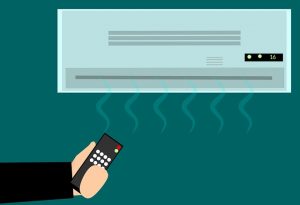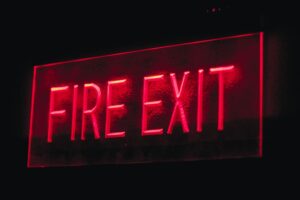How to be Better at the Shooting Range

You could have been visiting the shooting range for quite some time now, but you can’t seem to make any progress with your accuracy. You might be wondering: “What am I doing wrong?”.
Or you are about to go to the shooting range for the very first time and would like to gain some knowledge just before you step on the shooting line. If you don’t have a shooting range equipment jet, read here to find everything you need.
Either way, this article is for you. We are going to present you with five easy-to-follow techniques for better shooting accuracy.
Safety First
There are four sacred rules for handling a firearm:
- Always keep your gun pointed in a safe direction
- Treat your gun as if it were loaded at all times
- Keep your finger off the trigger until you are prepared to shoot
- Always be aware of your target and what lies beyond it
#1. Get a stable shooting stance
Stance is the foundation of accurate shooting. You can’t expect to be consistent with your shoot placement if you don’t take a stable standing position.
You can choose between the following three stances:
Isosceles
Face the target directly. Spread your feet at shoulder width or slightly wider. Align your toes with the target and flex your knees to assume a slightly leaning forward position. Extend your arms to form an isosceles triangle with them.
Weaver
Place the right foot back while moving your left foot forward, facing the target. Extend your right arm forward, with the left hand placed below and the elbow slightly bent.
Reverse rules apply if you are a left-handed shooter.
Fighting
Assume your position by facing the target directly. Spread your feet at your shoulder width or slightly wider. Your right should be slightly behind your left foot, with your knees slightly bent.
Reverse rules apply if you are a left-handed shooter.
Try all three techniques and choose the one that feels the most natural to you.
#2. Improve your grip
The right grip will reduce the unnecessary movement of the firearm and the speed and accuracy of the follow-up shots. When holding a gun, use both hands and grip the gun firmly.
These are the three golden rules to follow for proper handgun grip:
- Grip your gun as high as possible – the higher the grip, the more control you’ll have over your gun when firing.
- Make your contact area with the gun as large as possible.
- Be consistent with your grip.
#3. Work on your trigger pull
When you are pulling the trigger, avoid jerking it and clenching your hand, as these movements will cause inaccurate shot placement.
Place the pad of your index finger halfway between the tip and the first hinge on the trigger. Apply steady pressure on the trigger while squeezing it directly toward the gun’s rear and take your shot.
#4. Practice breathing
You might not have given it much thought, but the way you breathe can have a massive impact on your shooting accuracy.
Even though breathing only causes subtle body movements, the way you breathe when firing a gun can mean the difference between target hit and target missed.
There is a short halt between an exhale and an inhale and it is called a “respiratory pause.” This small window of opportunity is where your body movement is not influenced by your breathing and this is when you should take your shot.
Start with slow, deep breaths and get familiar with your breathing rhythm. This way, you will be able to anticipate a respiratory pause and shot at the right time.
If this technique feels unnatural to you, you can try a half-hold breath shot. Take a few slow, deep breaths, and upon exhaling half of the breath, pause and take your shot.
Whichever technique you choose to use, remember to practice it regularly until it becomes a routine.
#5. Lose the recoil anticipation
Recoil anticipation is a natural human reaction to awaiting the powerful impact from the gun blast upon the trigger squeeze and it can have a massive influence on your shot placement.
The best way to lose recoil anticipation is to have someone load your gun with both dummy rounds and live ammunition in random order.
Shoot a slow–fire group and if you catch yourself flinching on a dry shot, unload your gun and practice dry fire. Dry fire will help you enforce no reaction to a recoil.
This might not remove your recoil anticipation at once, but if you are consistent with practice, it will only be a matter of time before you lose it completely.
Key takeaways
If you want to improve your shooting accuracy, take a firm stance, hold your gun firmly and gently squeeze the trigger.
Apply a breathing technique that feels the most natural to you and practice as often as possible to lose the recoil anticipation.






